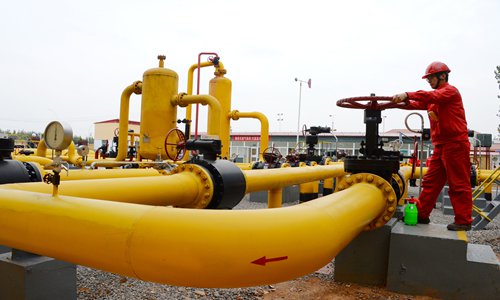China’s gas power plants are struggling to stay afloat as they face mounting pressure from lower tariffs and the ongoing trade war, says Wood Mackenzie.
The Chinese government has been reducing regulated gas-fired power tariffs by 16% to 28% in key provincial markets since June 2020. This is driven by political goals of reducing end-user power prices and improving manufacturing competitiveness in the wake of trade tensions with the US. Power tariffs for industries in China have fallen 25% in the last three years.
Gas-fired power tariffs at some higher-utilised gas plants (>3,500 hours per year) have even been lowered to a level similar to the much cheaper coal-fired power. This ‘coal parity’ initiative has a huge impact on the economics of the current gas fleet and investment decisions for new units.
Wood Mackenzie principal consultant Frank Yu said: “The new regulations will cause at least a 5 to 6 percentage point decline in the already poor margins of gas power plants. Delivered fuel costs at most gas power plants have only declined by 10% to 13%, while revenues have been cut by 16% to 28% due to the new regulations. Most projects are now loss-making or barely breaking even.”
Despite strong demand growth for clean power, government policies have been moving to limit gas power development and support energy security goals. Gas power technology used in China still relies heavily on imported technology from global players including Mitsubishi, Siemens and General Electric, while China’s LNG imports also surged by 12% last year.
By 2025, around 8 billion cubic metres or 17% of gas demand for power generation in four coastal markets could be at risk due to fewer new builds and lower utilisation hours as a result of poor economics. Wood Mackenzie estimates around 7 gigawatts (GW) out of 17 GW of gas-fired power projects scheduled for commissioning between 2022 and 2025, to be at risk for delays or cancellations. These projects are located in the coastal provinces of Zhejiang, Jiangsu, Shanghai, and Guangdong.
However, Yu said all is not doom and gloom. China has recovered rapidly from the coronavirus pandemic, posting an average of over 4% power demand growth since May.
He said: “We expect China to contribute close to half of global power demand growth in the next decade, which means the country will need to develop all power supply options including gas. If power markets become tighter in coastal China, local governments may have to reverse these policies.
“However, the recent move makes gas-fired power less attractive compared to coal and renewable power, which are supported by domestic equipment companies and fuel supply.”

 Iran Energy News Oil, Gas, Petrochemical and Energy Field Specialized Channel
Iran Energy News Oil, Gas, Petrochemical and Energy Field Specialized Channel



